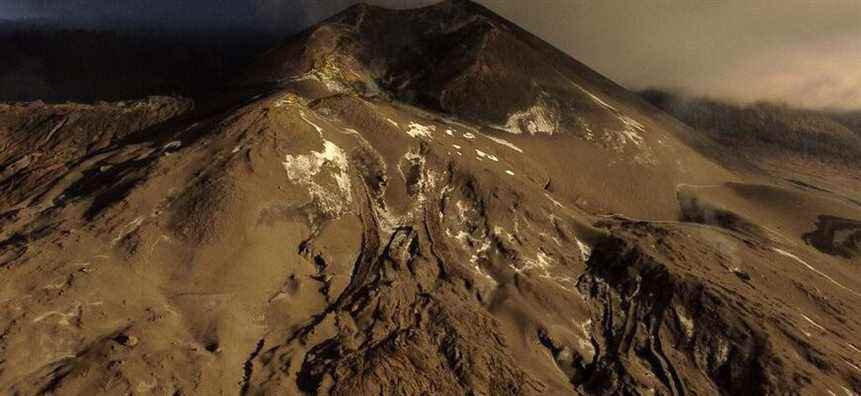The eruption of the Cumbre Vieja volcano, on the Spanish island of La Palma, was officially declared over by local authorities on Saturday, after more than three months of intense volcanic activity. The eruption started on September 19, without killing. This is the longest eruption the island has known and the first in 50 years, after those of the San Juan volcano in 1949 and Teneguia in 1971.
“It lasted 85 days and 18 hours (…) today the scientific committee can say it (…) the eruption is over”, announced Julio Pérez the director of the volcanic emergency plan of the Canaries (Pevolca) during a press conference given on Christmas Day. “There is no lava, no significant gas emission, no significant earthquakes”, listed the manager. A news eagerly awaited by the inhabitants of the island of the Canary Islands archipelago.
It was necessary ten consecutive days with no visible sign of volcanic activity, time required according to scientific experts, to be able to say that the episode was over, while the end of the eruption has been felt several times over the past three months, before resuming each time a few days later, to the great dismay of the inhabitants of the island.
Now Cumbre Vieja is in lethargy, its lava torrents are black, frozen, hardened, and a layer of black sand – ash – has settled like a veil over the place. Experts have already warned: the area will remain dangerous for some time to come due to persistent toxic gas emissions and the fact that the lava will take a long time to cool. Not to mention the risk of land collapse.
– Luismi Ortiz
Despite the duration of the eruption and the impressive images of the molten lava flows, it caused no deaths, but caused enormous damage: more than 7,000 people were evacuated, of which around 600 still live in hotels, and nearly 3,000 buildings have been destroyed. The lava covered 1,250 hectares of the island’s surface area and even enlarged it as the flows that reached the sea solidified and gave rise to two peninsulas, adding to the island’s surface area 44 ha for the ‘one and 5 ha for the other, according to the latest data provided by local authorities.

– HANDOUT / IEO-CSIC (SPANISH INSTITUTE OF OCEANOGRAPHY)
At the height of the episode, the volcano spat out thousands of gallons of lava, producing bubbling, fluorescent flows that rolled down the mountain, all in a constant hum. The 83,000 inhabitants of La Palma will remember neither the earthquakes nor the ash rains, nor the toxic gases or the smoke escaping from the cone of the volcano which forced them to seal themselves sometimes for several days. Sunken villas or buildings, roads disappearing under the lava flows and spectacular jets of salt water when the lava entered the sea: the activity of the volcano has punctuated the Spanish television news for weeks on end.

– Luismi Ortiz / UME
The lava also caused great harm to the banana plantations, the other key sector of the local economy, since it represents 50% of its GDP. Of the 70,000 hectares of the island, 10% are devoted to agriculture, mainly to the cultivation of bananas (43%), according to the foundation World Biosphere Reserve of La Palma. The damage could exceed 900 million euros, according to local authorities.
The Spanish government, whose leader Pedro Sánchez has visited the site on numerous occasions, has pledged 225 million euros in aid intended in particular to build housing and buy basic necessities, as well as to direct subsidies to farmers and fishermen. Madrid also called on the European Commission to activate the European Union solidarity fund.
